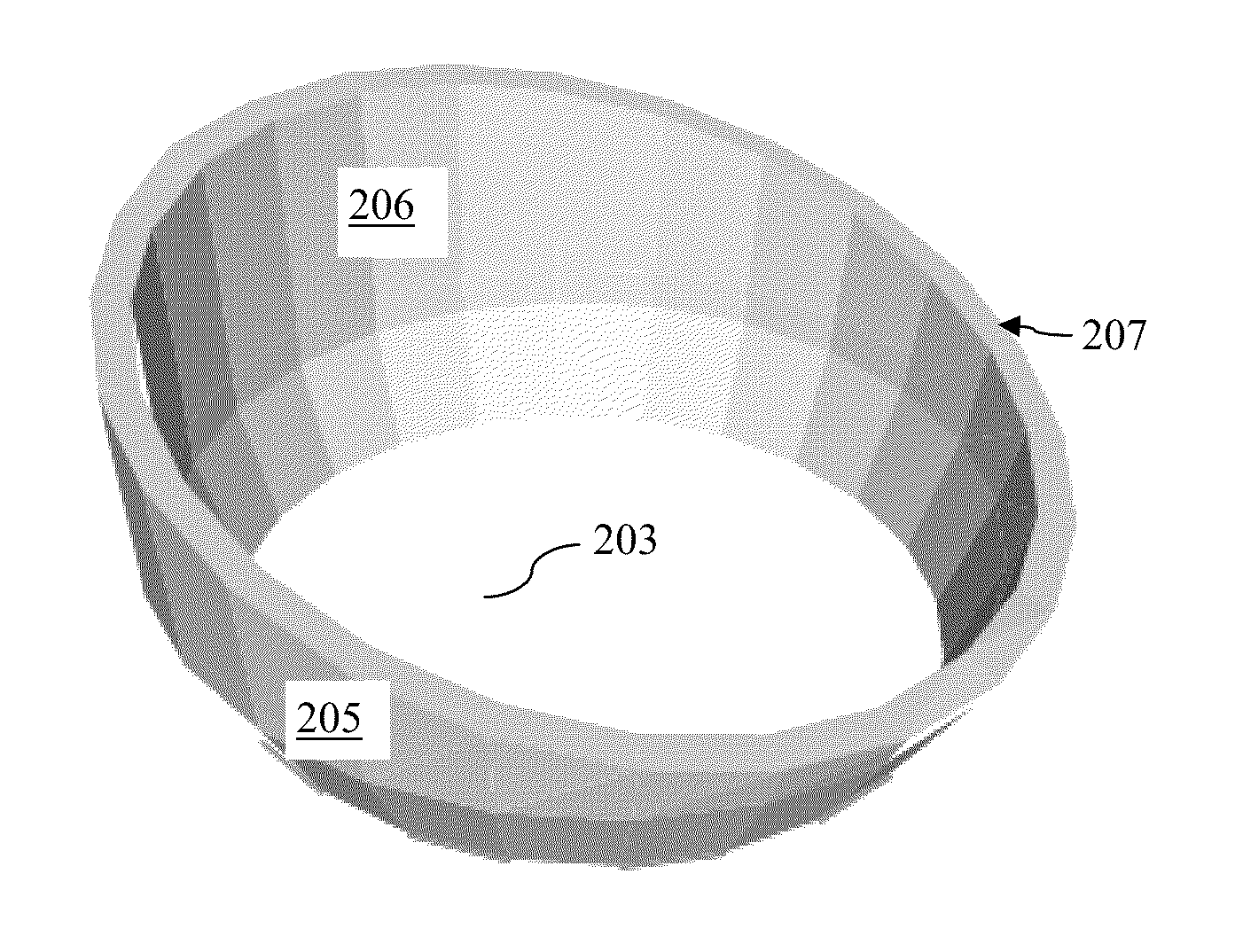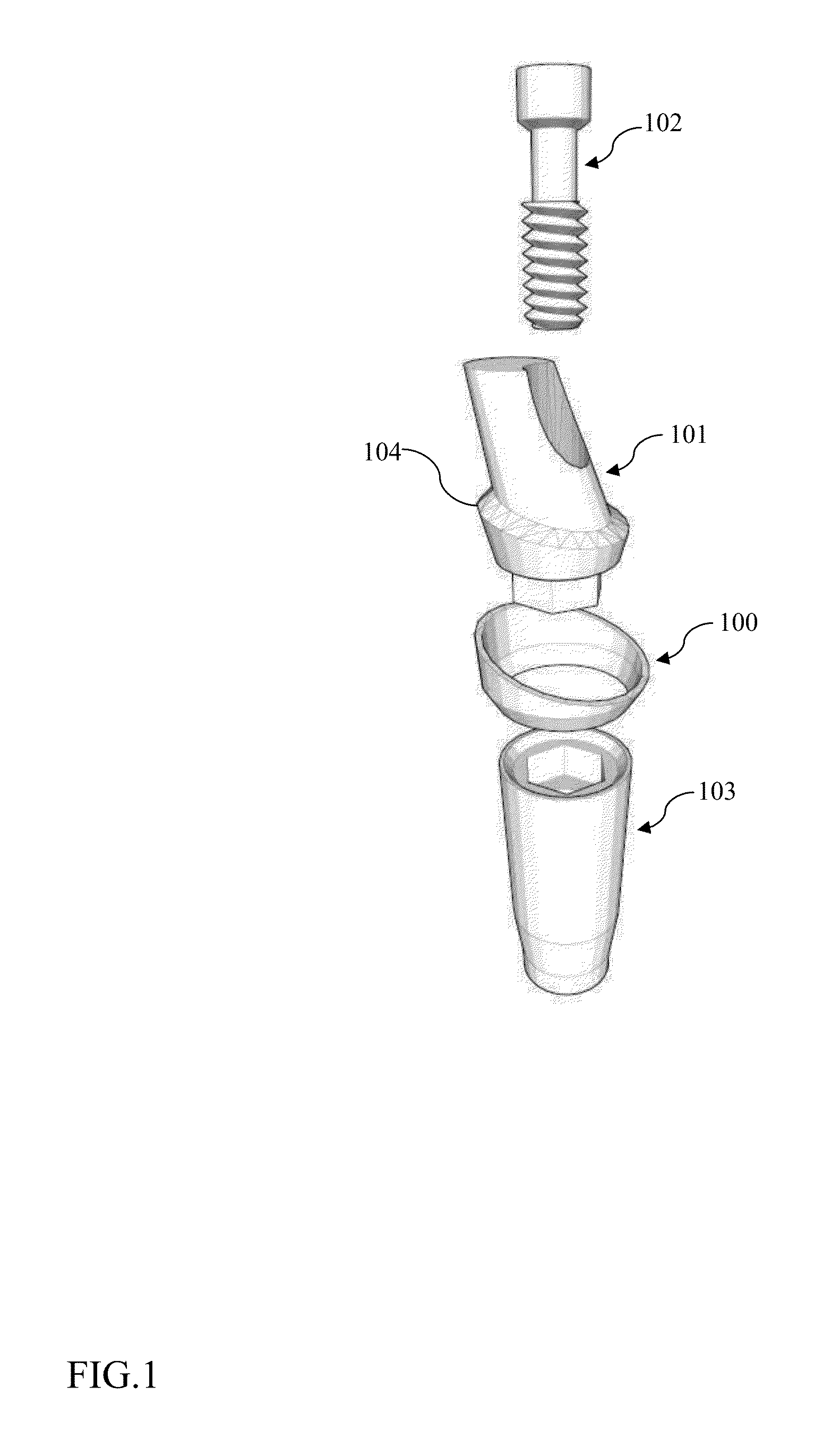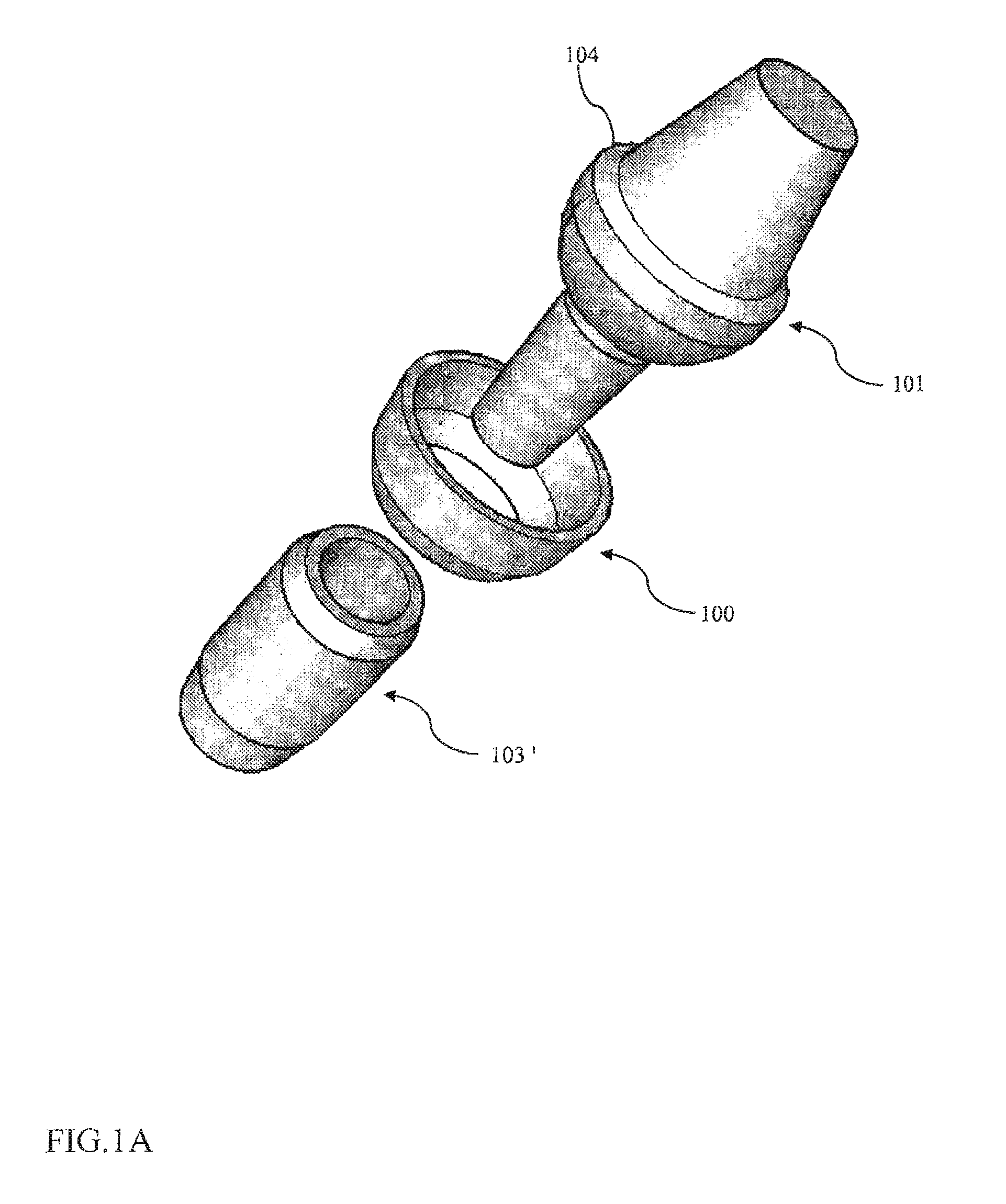However, this
pickup impression technique requires use of additional parts such as: implant analog, impression copings, and impression transfers which have an
impact on accuracy and cost of the restoration.
With
cement-retained prostheses that use customized abutments, the pickup impression technique cannot be used owing to the unique contour of the abutments.
Another important aspect of different impression techniques is the inaccuracy that they all present.
Perfect passive fit in the interface between an abutment and an implant is difficult to obtain due to the different factors that affect the process of prostheses fabrication, such as different
system tolerance, type of abutment, properties of
metallic alloy, impression materials, investing, and
casting problems.
Moreover, abutment position
distortion has often accompanied transfer impression techniques.
Artifacts caused by
retraction cord fibres that remain in the sulcus may affect the accuracy of optical impressions.
However, the powders used when making optical impressions to reduce
reflectivity and make tooth surfaces measurable can influence impression accuracy by increasing
tooth surface thickness.
Significant errors can result from thin impression margins with a
radius less than the contacting probe tip.
Unlike direct impression techniques, the indirect scanable body does not retrieve any information about the abutment what may be in some cases indispensable mostly for the aesthetics.
The implant surrounding fibre structure, however, does not provide the same level of support and is not able to prevent the collapse of retracted tissues to the same extent, which complicates attempts to successfully make impressions.
Yet at the same time, clinicians need to ensure that the retraction forces are gentle since patients' perimplant junctional
epithelium is more fragile.
Collapse is the tendency of the gum to flatten under forces associated with the use of closely adapted customized
impression trays.
Techniques that clinicians have refined to work well for teeth may not address the challenges faced by clinicians in implant
dentistry.
Cord: Clinicians place retraction cords by using cord-packing instruments; however, many commonly used hand instruments (such as the Hollenbach carver tip) were not designed for this application.
The forces generated by pointed or wedge-shaped instrument tips may be traumatic to the relatively fragile junctional
epithelium around implants, whereas tooth's gingival tissues may be more forgiving of this type of force.
There is no literature describing the use of cord-packing instruments, and the forces involved with cord placement remain undetermined.
The use of a single
retraction cord often provides inadequate gingival retraction.
Placement of retraction cords can
cause injury to the sulcular
epithelium and underlying connective tissues, as shown by the results of experiments involving dogs' teeth.
Use of minimal force is necessary when packing cords to protect Sharpey fibres, and application of excessive force is inappropriate because it may cause bleeding,
gingival inflammation and shrinkage of marginal tissues.
It is, however, associated with significant local and systemic side effects, which investigators have reported occurring during 33 percent of applications.
Aluminum
chloride is the least irritating of the medicaments used for impregnating retraction cords, but it disturbs the setting of polyvinylsiloxane impression materials.
The two main drawbacks of using chemicals with retraction cords are: a) the occurrence of rebound
hyperaemia that often occurs after cord removal, which affects how effectively clinicians can make impressions, and b) inflammatory reactions induced by these chemicals, which can affect the sub epithelial
connective tissue.
When clinicians consider all of these factors, they may question whether retraction cords are appropriate for use around implants, given the
vulnerability of the junctional epithelium.
As with any foreign materials introduced into the
oral cavity, there remains a small risk of residues' persisting in the gingival crevice.
The
viscosity of the injectable matrix may not be enough to provide sufficient retraction for deeper subgingival reparations, and aluminum
chloride can inhibit the set of polyether and polyvinylsiloxane materials if clinicians do not rinse it away properly before making impressions.
In patients who have deeply placed implants with subgingival margins, however, its value may be somewhat limited by the extent to which such matrices are able to retract effectively.
Potential drawbacks are that it may not improve the speed or quality of retraction obtained and that it likely is less effective with subgingival margins.
The use of Nd:YAG lasers is contraindicated near implant surfaces, because they tend to absorb energy, which causes them to heat up and transmit the heat to bone, owing to the effects of this
laser's
wavelength on
metal.
There is also a tendency for Nd:YAG lasers to damage the fragile sub junctional epithelium at the sulcus base around implants.
The haemostasis achieved with the Er:YAG
laser, however, is not as effective as that achieved with the
carbon dioxide (CO2)
laser.
Therefore, their use may not be practical around deeply placed implant fixtures where a large defect could result.
In addition, in anterior applications in which aesthetics is critical, it may not be desirable to create a trough around the margins, as it may have a detrimental effect on patients' appearances.
Although CO2 lasers may be significantly useful in some implant impression situations, they are invasive, thus failing to meet the ideal objective of a truly conservative technique.
 Login to View More
Login to View More  Login to View More
Login to View More 


